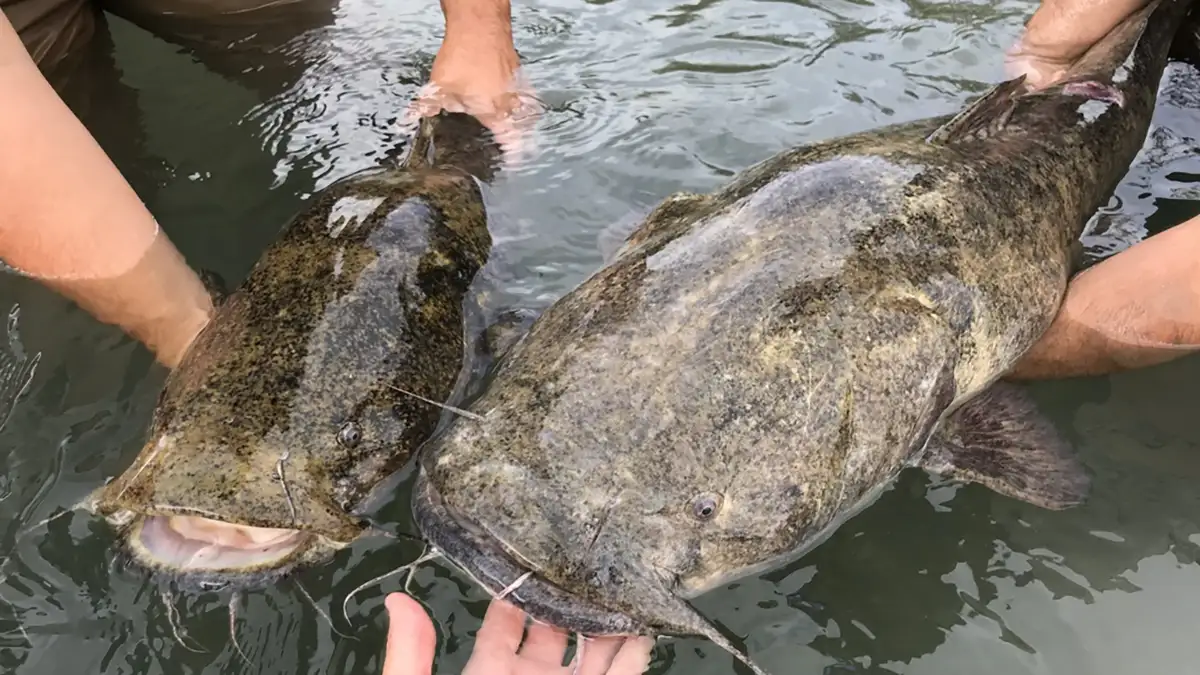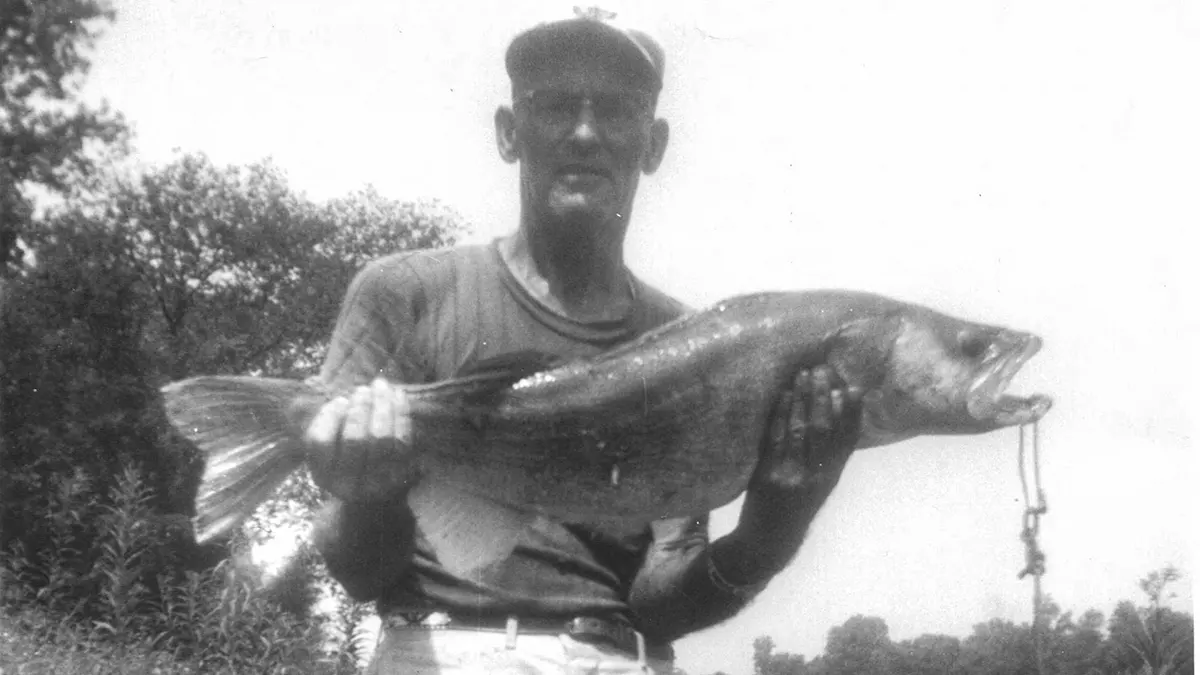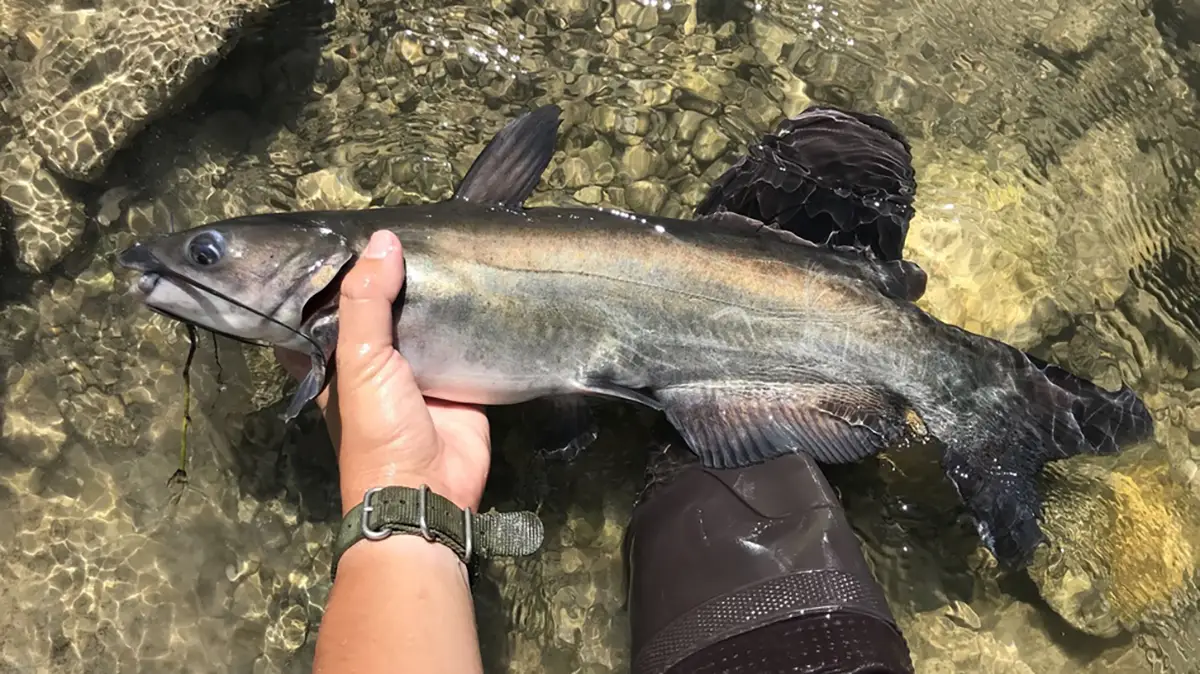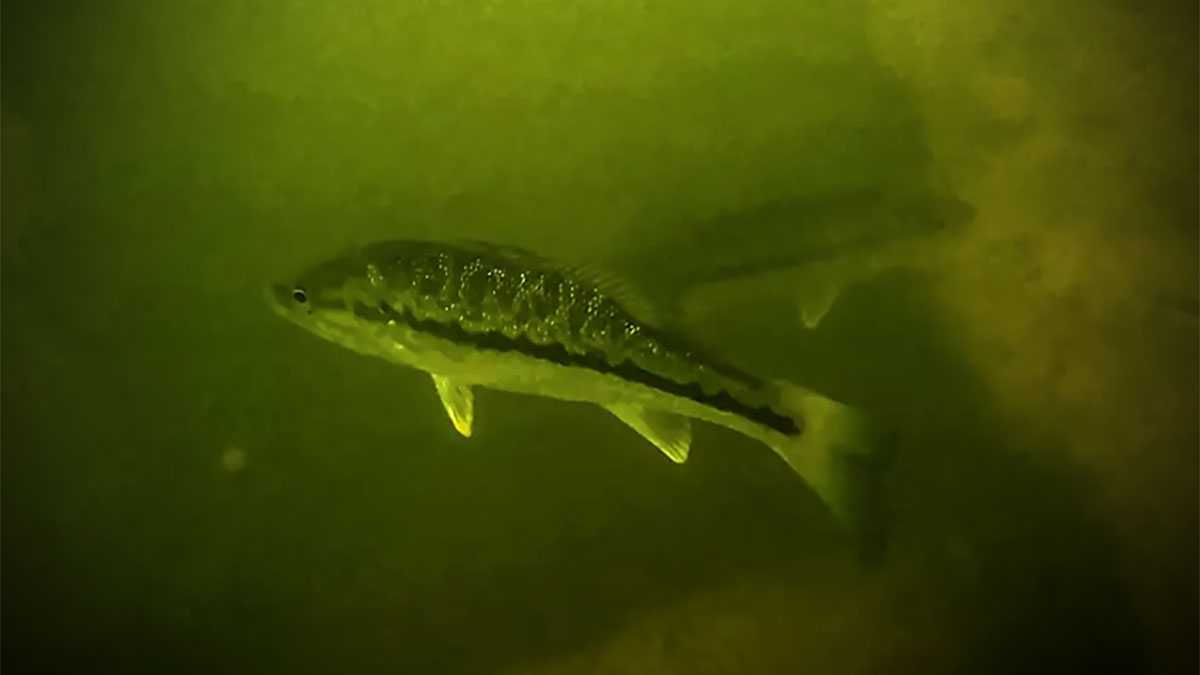The flathead catfish goes by many names, can have impressive coloration, and is a fierce predatory fish anywhere they are found. For catching catfish on rod and reel, trotline, jugline or noodling by hand, these catfish can put up an unbelievable fight. Flatheads can even manipulate an entire fishery as an apex predator. The biggest flathead catfish ever caught weighed more than 120 pounds.
We have compiled everything you need to know about flathead catfish in the following species profile.
Flathead Catfish History
Flathead Catfish (Pylodictis olivaris) belong to the Ictaluridae family or North American catfish family. Ictaluridae includes channel catfish, white catfish, bullheads, and the blue catfish. There are other families of catfish worldwide, including the Pangasiidae which includes the Mekong giant catfish, the Siluridae, which includes the wels catfish, Callichthyidae which includes the aquarium cory catfish, and the Loricariidae which includes the armored catfish. These families are found in Siluriformes order, which includes all catfish species found worldwide.
Flathead catfish were first described by Constantine Samuel Rafinesque from a fish out of the Ohio river in 1818. The description can be found in “Discoveries in Natural History, Made During a Journey Through the Western Region of the United States.” The species name Pylodictis olivaris is broken into two parts, Pylodictus is a combination of Greek words that translates to mud cat referring to the muddy areas it likes to inhabit, and olivaris is Latin for olive in color which comes from the fish yellowish color.
The flathead catfish has several common names, including flathead, yellow catfish, mud cat, opelousas, op, opelousa, flat belly, pied cat, Mississippi mud cat, marbled cat, and shovelhead cat.

Flathead Catfish Identification
Flathead catfish are easily recognizable for most anglers as they have distinctive characteristics not found in other catfish species. The mouth of the flathead catfish has a noticeable underbite, with the lower jaw extending well past the upper jaw when the mouth is closed. The mouth is set more terminal then many other catfish species and has 8 barbels surrounding it. The barbels are primarily a sensory organ used to locate forage. The four barbels on the chin have a lighter coloration, that may be white to gray, but never dark black. The barbels on the side and above the mouth are darker in coloration. The head of the flathead is, as its common name suggests, significantly flattened.
The body of the flathead catfish is elongated and scalesless with the upper regions darker brown to gray or black in coloration. The stomach to the chin of the fish is lighter white to yellow or gray. The entire body can have modeled coloration or pigmentation making each fish appear very unique. Juvenile fish dorsal, pectoral, and pelvic fins have coloration for approximately half the fin and little to no coloration for the other half. As flathead catfish age the fin coloration will typically fill in to the entire fin. The dorsal and pectoral fins will have one large serrated spin. The dorsal fin will have a ray count of 6 to 7 and the pectoral fin will have 8 to 11 rays.
The anal fin is short and round with dark coloration and possibly an even darker margin on the edges. The anal fin will contain 14 to 17 rays. The caudal fin will be rounded with a dusty or dirty coloration. Younger fish may have white tipping or margin on the caudal fin. The adipose fin will be darker and deeply notched at the rear to show signification detachment from the body.
When comparing flathead to channel or blue catfish the round caudal fin should be the number on identification tool, with coloration, anal fin length and shape, and the head being secondary indicators. When comparing flathead to bullhead species the head and jaw will be the most influential identification tool, with barbel and body coloration being secondary indicators.
Flathead Catfish Location
Flathead catfish have expanded well beyond their native range for at least the past 150 years. The primary home range historically was restricted to the Mississippi, Ohio and Missouri River drainages as well as southern portions of the Rio Grande, Red, White, Tennessee River drainages. Their eastern boundary was the Appalachian mountains extending north into Pennsylvania. Their western boundary was eastern South Dakota to Kansas, parts of Texas and slightly into New Mexico.
Today due to purposeful stocking, and slow migrations throughout river systems they have expanded into Canada, throughout the Great Lakes, and the majority of the continental US states. They are still not currently present in Alaska, Hawaii, Montana, Utah or northeast of New York.
To show the historic and expanded range of flathead catfish we created this interactive map:
Flathead Catfish Spawning
Flathead catfish will begin to spawn in late spring or early summer as water reaches 72 to 77 F . This spawn takes place a little later than the channel catfish spawn. The male and female flathead work together to create a nest in a cavity. This could be within or under logs, rocks, undercut banks, roots, buckets, cars, or tires. Once the nest is created, the female will have between 500 to 3000 eggs per lb of body weight. She may lay 3,000 to 100,000 eggs during a spawning season and up to 60,000 into a single nest depending on her size.
Once the eggs are laid, the male will immediately push the female from the nest and aggressively attack her or any other fish that enters the cavity. Eggs are initially adhesive, sticking to the bottom substrate of the prepared nest. They are around .2 inches in diameter and yellow in color. Eggs hatch based on water temperature taking 6 to 9 days, with faster hatching occurring in warmer waters. The male spends this time guarding the nest protecting the eggs and providing them oxygenation and water flow by constantly pulsing his fins and tails to move water.

Flathead Catfish Size and Lifespan
Flathead fry hatch at a size of around .4 inches, they gradually absorb their yolk sacs and gain pigmentation over their first 10 to 14 days. As soon as they begin to swim up they are flushed from the nest by the male. Fry flathead catfish immediately seek current and areas with rock to hide in and around as a school. They grow fairly slowly until they can transition to consuming larger forage items at around 4 inches, this can take up to a year. Once they reach 4 inches they will expand their home ranges and become solitary.
Their first year growth will average 4 to 6 inches across the country, with southern populations growth closer to 8 inches. Annual growth will average 3 inches per year in subsequent years. Flathead catfish mature at 3 to 4 years and 12 inches for males and 4 to 5 years and 16 inches for females. They have longer lifespans with 10+ years being average and 30+ being observed in extremely large individuals.
Flathead Catfish Habitat
Flathead catfish evolved to live primarily in deep segments of rivers and larger streams. The creation of reservoirs allows them to find suitable environments both above and below the dam in pools. They will be most abundant in slack to slow moving areas. The adult flathead can often be found under banks, within larger logs, or near rock piles throughout the day and at nighttime will move out into open water to feed.
Flathead catfish can thrive in both turbid and clear water bodies, although their growth rates improve in less turbid water while their abundance increases in turbid water. They can tolerate moderate exposure to brackish water and will allow fish to move through estuaries to other river drainages. Flathead appear to tolerate salinity as high at 11 ppt for an extended period of time.

Flathead Catfish Diet
Flathead catfish consume primarily live forage throughout their entire lives. Juvenile fish begin consuming crustaceans and insect larva. Their diet transitions as they grow beyond 4 inches in length. At that time they will begin consuming crayfish and juvenile fish. As flathead catfish advance into adulthood they consume primarily fish that include sunfish, common carp, bullheads, and shad. The flathead is an apex predator that will adapt to forage as it becomes available. This includes feeding on birds, crabs, and turtles.
Flathead catfish are considered to be primarily nocturnal feeders but will consume forage opportunistically. They are known to lay on the bottom of the fishery with their mouths open. As fish swim near their mouths or into it they will aggressively attack and consume their prey whole.
They have extraordinary vision and a very large mouth gape that allows them to swallow forage items almost as large as they are. This trait has tempted many fisheries managers to utilize flathead catfish as a control method for undesirable fish species. Their overall aggressive demeanor and uncontrollable forage consumption usually leaves those experiments unsuccessful.

Flathead Catfish Threats
The flathead catfish is currently at no risk within their native range, they are well expanded beyond that range as well. Their only predators are anglers or other flathead catfish. There is some concern with their impact on fisheries as they are introduced. Specifically on their ability to consume native stream and river species that are exceptionally vulnerable to aggressive predators. Additionally flathead catfish will become direct competitors with other catfish species and even consume them if given the opportunity.
Flathead Catfish Facts You Need To Know
- The IGFA world record is 123 pounds caught by Ken Paulie from Elk City Reservoir in Kansas May 19, 1998
- The current noodling record is possibly a 106 lbs fish grabbed in 2021 in East Texas but the scale and the story certainly need to be heard to be believed
- Flathead catfish are the second largest North American catfish species behind the blue catfish
- The oldest known flathead was 45 years old from Three Rivers Pennsylvania
- Male flathead catfish will become so aggressive when guarding their eggs that they will kill the female if she returns to the nest
Lead photo by NLoveland / iNaturalist


















